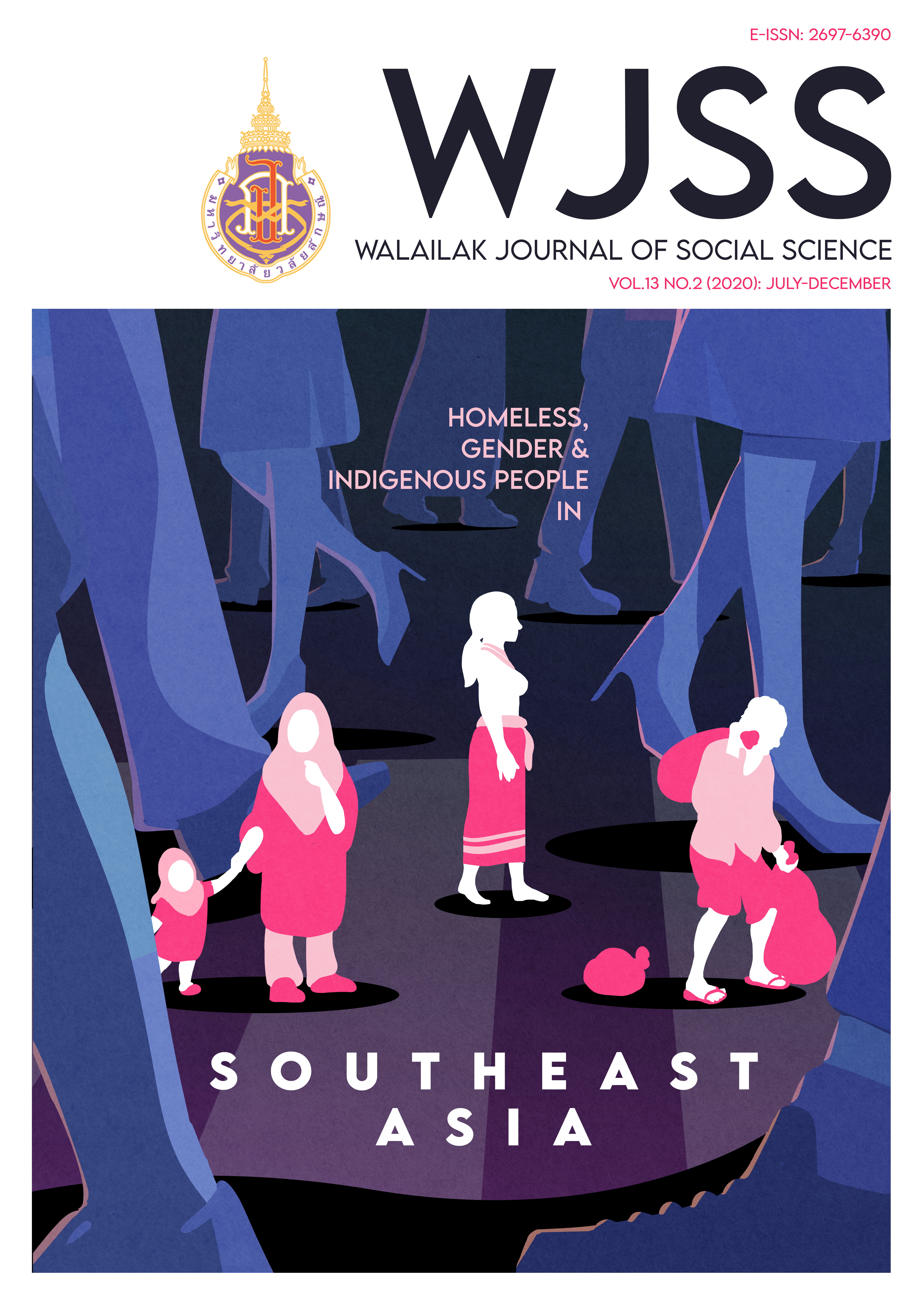Factors that Influence the Intertextuality of Indonesian Films between 1980s-2010s
Main Article Content
Abstract
This article explores factors influencing the intertextuality of Indonesian Films between 1980s-2010s through reviewing the contents and key issues in three famous films, namely Ayat-Ayat Cinta, Perempuan Berkalung Sorban, and Ketika Cinta Bertasbih. In this research project, the focuses are placed on political contexts and policies implemented in each period and identify their connections to Islamic films that had been formed in Indonesia. The study emphazises the film as an agency in reflecting the history of the growth and supremacy of Islam in Indonesia.
The research results show the conditions of Islamic film formation that had been popular in the Period of Reformation (Reformasi) after the fall of the New Order (Orde Baru). Factors influencing the intertextuality of Indonesian Films between 1980s-2010s include the changing policies in the political periods, as represented in the films. Other factors are related to culture, social value, economy, and Islamization. Despite having the largest Muslim population in the world, Indonesian national history has not always prioritized the Islamic values from the very beginning. Islamic values in Indonesia are distinctive because the nation was not founded as an Islam state, and being an Indonesian does not necessarily mean being a Muslim.In light of that condition, the religion is employed as a tool to influence the people. As the study has found, Islamic films have been incorporated with Islamic ideas and concepts to illustrate the parallel development of the Indonesian state and Islam as practiced in Indonesia.
Article Details
Copyright: CC BY-NC-ND 4.0
References
Abdullah, A. (2001). Muhammadiyah’s experience in promoting civil society on the eve of the 21st century. Islam and Civil Society in Southeast Asia. Singapore: institute of Southeast Asian Studies, 43-56.
Arimbi, D. A. (2009). Reading contemporary Indonesian muslim women writers: representation, identity and religion of muslim women in Indonesian fiction.
Bramantyo, H. (2008). Ayat-Ayat Cinta. [Film]. Indonesia: Dhamoo Punjabi.
Bramantyo, H. (2009). Ketika Cinta Bertasbih. [Film]. Indonesia: Chand Parwez Servia.
Bramantyo, H. (2009). Perempuan Berkalung Sorban. [Film]. Indonesia: Chand Parwez Servia.
Clark, M. (2004). Masculinities and symbolic violence in recent Indonesian Cinema. Journal of Southeast Asian Studies, 35(1), 113-131.
Federspiel, H. M. (1970). The Muhammadijah: a study of an orthodox Islamic movement in Indonesia. Indonesia, 10(11), 57-79.
Hanan, D. (2010). Innovation and tradition in Indonesian cinema. Third Text, 24(1), 107-121.
Hasanal-Turabi, (1987). The Renewal of Islamic Thinking (Tajdid al-Fikr al-Islam). Jeddah, Saudi Arabia: Al-DaralSu’udiyalial-Nashrwaal-Tawzi’.
Hayimasae, N. (2008). Jak “Haramayn” Soo “Usakanay” Islamaphiwatont Phan Sathaban Kansueksa Isalam Ton Satawat Thi (The Islamaic world and Muslims in Southeast Asia) [From "Haramay" to "Southeast Asia": Islamapiwat through the early 20th century Islamic educational institutions]. Bangkok: The Foundation for the Promotion of Social Sciences and Humanities Texbooks Projects.
Heeren, K. V. (2007). Return of the Kyai: representations of horror, commerce, and censorship in post‐Suharto Indonesian film and television. Inter-Asia Cultural Studies, 8(2), 211-226.
Hefner, R. W. & Zaman, M. Q. (2007). Schooling Islam: The culture and politics of modern Muslim Education. NJ: Princeton University Press.
Heider, K. G. (1991). Indonesian cinema: National culture on screen. NY: University of Hawaii Press.
Imanjaya, E. (2009). The other side of Indonesia: New Order’s Indonesian exploitation cinema as cult films. Colloquy, 18(9), 143-59.
Kaushik, S. N. (1993). Politics of Islamization in Pakistan: A study of Zia regime (Vol. 29). South Asia Books.
Liow, J. C. (2008). The politics of Indonesia-Malaysia relation. London: England.
Lœ̄tphaiboonsiri, S. (2006). “GIE” nang in do thi naksueksa thai mai khuan phlat [“GIE” Indo movies that Thai students should not miss]. Retrieved from https://prachatai.com/node.
Mahayana, M. S. (2007). Ekstrinsikalitas Sastra Indonesia. PT RajaGrafindo Persada.
Marddent, A. (2017). The concept of islamic feminism: a review. The Thammasat journal of history, 4(1), 65-113.
Naamsirilert, S. (2013). Islamization of islamic television drama in Thailand. (Master’s thesis, Chulalongkorn University). Retrieved from http://cuir.car.chula.ac.th/handle/123456789/43206
Naamsirilert, S. (2013). Itsalamanuwat lakhon thorathat Isalam nai prathet Thai. (Witthayaniphon maha ban thit, Chulalongkon mahawitthayalai)
Palmier, L. H. (1954). Islam in Indonesia: The Muhammadiyah after independence. Pacific Affairs, 27(3), 255-263.
Phueaksom, D. (2012). Prawattisat Indonisia rat charit bon muko khwampen samaimai baep ananikhom lae satharanarat haeng khwam lak lay [History of Indonesia: the archipelago state colonial modernity and republic of diversity]. Bangkok: Muang Boran.
Rani, M. Z. A. (2012). Islam, Romance and Popular Taste in Indonesia: A textual analysis of Ayat ayat cinta by Habiburrahman El-Shirazy and Syahadat cinta by Taufiqurrahman Al-Azizy. Indonesia and the Malay World, 40(116), 59-73.
Sasono, E. (2007). Kandang dan gelanggang: sinema Asia Tenggara kontemporer. Kalam [kerjasama dengan] Hivos.
Sasono, E. (2011). Muslim Sosial dan Pembaharuan Islam dalam Beberapa Film Indonesia. Komunitas Salihara, 9, 1-15.
Sasono, E., Imanjaya, E., Ismail, I. A., & Darmawan, H. (2011). Menjegal film Indonesia; Pemetaan ekonomi politik industri film Indonesia. Jakarta: Rumah Film Indonesia & Yayasan Tifa.
Sen, K. & Hill, T. D. (2012). Media, culture and politics in Indonesia. England: Oxford University Press.
Sen, K. (1993). Politics of melodrama in Indonesian cinema. In Melodrama and Asian cinema. Cambridge, England: Cambridge: University Press.
Sinthuphan, J. (2017). Tai ngao Ka’bah satsana chat lae atta lak Indonisia [Under the shadow of the Ka’bah: religion, nation, and Indonesian identity]. Retrieved from https://scn.ncath.org/articles/in-the-shadow-of-kabah/
Siti Rugayah, T. (2012). The Islamic Value in Malaysian Television Drama on Channel 1. Advances in Natural and Applied Sciences, 6(4), 552-560.
Songprasert, P. (2004). Indonesia: adit lae patchuban [Indonesia: past and present]. Bangkok: Chulalongkorn University.
Sucharittanarak, W. (1999). Economic and political development Indonesia. Bangkok: Khrongkan Čhat Phim Khopfai.


